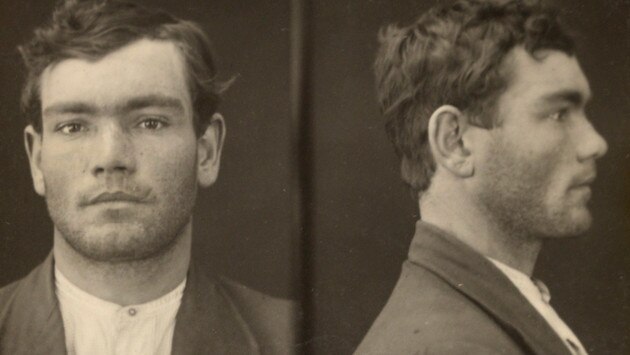How detached ‘human glove’ helped police crack a murder mystery
After the intact skin of a dead man’s hand was found, it was left to a fingerprint expert with a cast-iron stomach to crack the case.

In Black and White
Don't miss out on the headlines from In Black and White. Followed categories will be added to My News.
A star exhibit at the Easter Show in Sydney in 1950 was a “human glove” that helped police crack a murder mystery years earlier.
Crowds flocked to see the preserved skin of the right hand of a man named Percy Smith, whose body was found on the banks of the Murrumbidgee River on Christmas Day, 1933.
The story is told in the latest episode of the free In Black and White podcast on Australia’s forgotten characters, with crime historian Michael Adams:
Adams tells the story in his new book, The Murder Squad.
“I hate to say it, but it starts with a butt on Christmas Day, more precisely, buttocks, decayed buttocks poking out of Murrumbidgee River outside of Wagga Wagga,” Adams says.
The body was hauled from the river but was so badly decomposed that police were unable to identify the victim, until they made the startling discovery.
“Incredibly, they find an entire human glove, so we’re talking all of the skin from the dead man’s right hand intact,” Adams says.
“So imagine a latex glove, except made of skin.”
It was theorised the victim’s sleeve was so tight around his wrist that when the body expanded in the water, it cut into the skin and the “human glove” came off.

Detectives carefully packed the hand – with fingernails still attached – in cotton and sent it to Sydney for fingerprinting.
By 1933, NSW police had been using fingerprints to solve crimes for 30 years and had a database of 200,000 cards.
The head of the fingerprint department faced the world-first task of getting prints from the dried skin.
He tried gently softening the skin with soap and lanolin, but that made it too floppy to get a fingerprint.
“So he was clearly a man with a very strong stomach and a very bold imagination,” Adams says.
“He lubricated his own hand, and slid his own hand inside this human glove so he could then actually apply pressure from within to get the fingerprints.
“And it worked, which is, you know, super gross, but also super, super clever.”
Police then narrowed the database search by looking for criminals – whose deaths were less likely to be reported to authorities – starting with those who had not been seen recently.
“And they ended up, allegedly within three hours, identifying the man,” Adams says.
Once police identified the victim, it took days of dogged police work to crack the case, tracking down anyone who saw Smith in his final days.
Police charged Edward Morey, who killed Smith to make some money selling his meagre belongings, and he was imprisoned for murder.
To find out more, listen to the interview in the free In Black and White podcast on Apple Podcasts, Spotify or web.
See In Black & White in the Herald Sun newspaper every Friday for more stories and photos from Victoria’s past.


